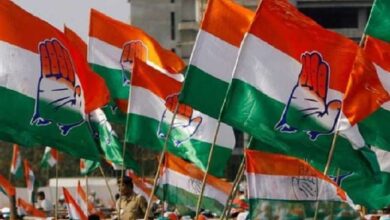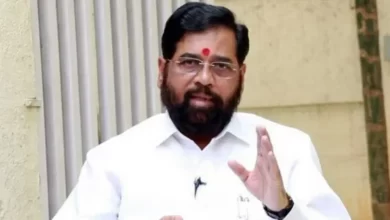unemployment epidemic

[ad_1]
The policy should be to generate employment, but the whole exercise is to achieve growth rate.
Saroj Kumar
The policy should be to generate employment, but the whole exercise is to achieve growth rate. Policy-makers believe that if the growth rate increases, then employment opportunities will also be created. But this method of economics has failed long ago. We are passing through an era of jobless growth.
After getting used to living with the pandemic, it seems that now we have to make a habit of living with unemployment as well. But living with unemployment is as difficult as living with a pandemic without medicine, oxygen and vaccines. We have made a vaccine for the epidemic, but unemployment has not taken any damage at the moment. There does not seem to be any concrete initiative in this direction. Now even it is being said that unemployment should not overtake the epidemic. Unemployment continues to rise even after the epidemic has stopped. More than one crore people have lost their jobs during the pandemic period. This series is still going on. According to the Center for Monitoring Indian Economy (CMIE), in the last month i.e. July alone, 32 lakh salaried people lost their jobs. The unemployment rate has remained consistently above seven percent in August as well. These figures are scary.
The unemployment situation was worse than before due to policy lapses. The pandemic has made it worse. The policy should be to generate employment, but the whole exercise is to achieve growth rate. Policy-makers believe that if the growth rate increases, then employment opportunities will also be created. But this method of economics has failed long ago. We are passing through an era of jobless growth. Still, why we are not ready to break away from this policy, we can only answer it. The result of the growth rate policy has been that the income of some three percent of the people has increased even during the epidemic, while the rest of the population is forced to bear the brunt of unemployment and poverty.
The two major economic reforms in the country in the form of demonetisation (November 8, 2016) and GST (July 1, 2017) proved to be a reversal in the direction of growth. Both the reforms failed to achieve their objectives. However, what was there is also gone. After both the reforms, the unemployment rate reached a forty-five year high of 6.1 per cent during July 2017 to June 2018. The National Sample Survey Office (NSSO) report had put the unemployment rate at 8.9 percent instead of 6.1 percent. This has been an unprecedented level of unemployment in the country. After this, there was a slight improvement in the unemployment rate during July 2018 to June 2019 and it came to 5.8 percent. But last year the pandemic made the situation so bad that India reached a worse situation than its neighbours.
International Labor Organization (ILO) figures show that during the year 2020, the unemployment rate in India was 7.11 percent, while it was five percent in China, 5.30 percent in Bangladesh, 4.65 percent in Pakistan, 4.48 percent in Sri Lanka, 4.44 percent in Nepal. , and Bhutan recorded 3.74 percent. Talking about the world, the average global unemployment rate in 2020 was 6.47 percent. In the current year also, there are signs of India’s unemployment rate to be above seven percent.
A major reason behind the high unemployment rate in our country is also the continuous shrinking of the public sector. Statistics show that in countries where the public sector is strong, the unemployment rate is proportionately lower. In terms of the strength of the public sector, India’s position is worse than its neighbors in the world. According to ILO data, only 3.8 percent of India’s total workforce is employed in the public sector. Whereas in China this figure is about fifty percent, in Pakistan about seven and a half percent and in Bangladesh about eight percent.
In terms of employment, the public sector is considered good because the jobs here are more secure than the private sector. Even in times of crisis, only the public sector gives it. This has become clear during the pandemic. But the sad part is that our policies are in the name of the private sector, whose aim is not to create jobs, but to make maximum profits. In the public sector, opportunities are dwindling and then where there are opportunities, there are no recruitments. According to a study, there are more than six million government posts vacant in the country. In this, more than eight lakh seventy two thousand vacancies are in the central government alone. But in the financial year 2020-21, the appointments of the central and state governments reached a three-year low. National Pension System (NPS) payroll figures show that while central government appointments fell by twenty-seven per cent, state governments made twenty-one per cent less appointments.
Only about nineteen percent of the labor force in the country is employed in the organized sector. Out of this, about four percent is taken out of the public sector, then only about fifteen percent of the jobs in the private sector are such, where workers work in better conditions. Rest eighty one percent of the labor force is Ram trust in the unorganized sector. When this large part of the labor force has work, when it is not, and even if it is, of what status, nothing is certain. That is, the sword of unemployment always hangs on the head.
About half of this eighty-one percent labor force of the unorganized sector is employed in the agriculture sector. In agriculture, the wage is the lowest and then there is no work always, so workers come here only when the other doors of more wages are closed. The worrying thing is that the number of workers in the agriculture sector is increasing. According to the recently released Periodic Labor Force Survey (PLFS) report, the share of labor employed in agriculture increased to 45.6 per cent during July 2019 to June 2020 from 42.5 per cent in 2018-19. However, in the Consumer Pyramids Household Survey (CPHS) of CMIE, this share has been given as thirty-eight per cent, which was 36.1 per cent in 2018-19. Women also account for the increased share of labor in agriculture, and that 60 percent of the total working women are employed in the agriculture sector. It also shows the position of women in the job market.
The decline in the number of workers employed in various sectors of the economy was attributed to the shutdown of economic activities due to the pandemic. It was expected that workers would return to these areas from the agricultural sector once economic activities resume. But the second wave of Corona dashed this hope. According to CMIE, during 2020-21 (July to June) also, the migration of workers from other areas to the agriculture sector continues. The share of labor employed in agriculture increased from thirty-eight per cent to 39.4 per cent during this period. Importantly, the share of workers employed in the manufacturing sector declined from 9.4 per cent to 7.3 per cent. Yes, there has been an improvement in the construction sector, where the share of workers increased from 13.5 per cent to 15.9 per cent in the 2020-21 period. With the increase in economic activity, jobs in the unorganized sector may come back to some extent. But the famine of good jobs is going to continue for the time being, as only a part of the wage cut has not been restored yet. The focus of the government is on the strength of the corporate sector, from where growth rate can be achieved, but the talk of employment is meaningless.
.
[ad_2]






